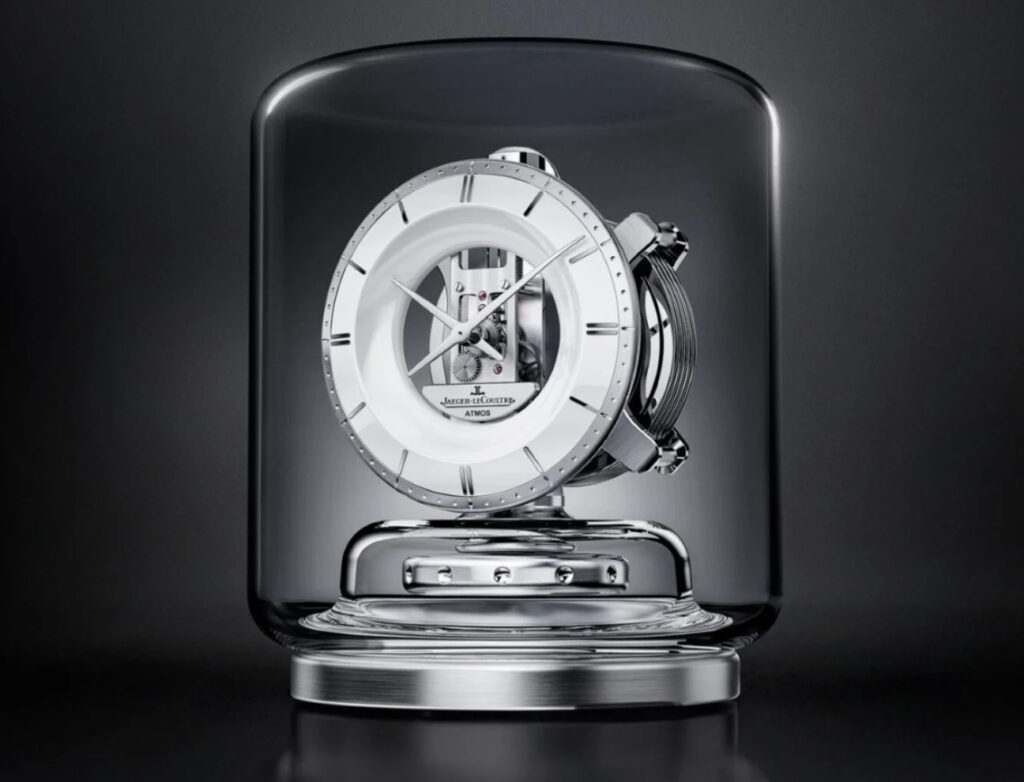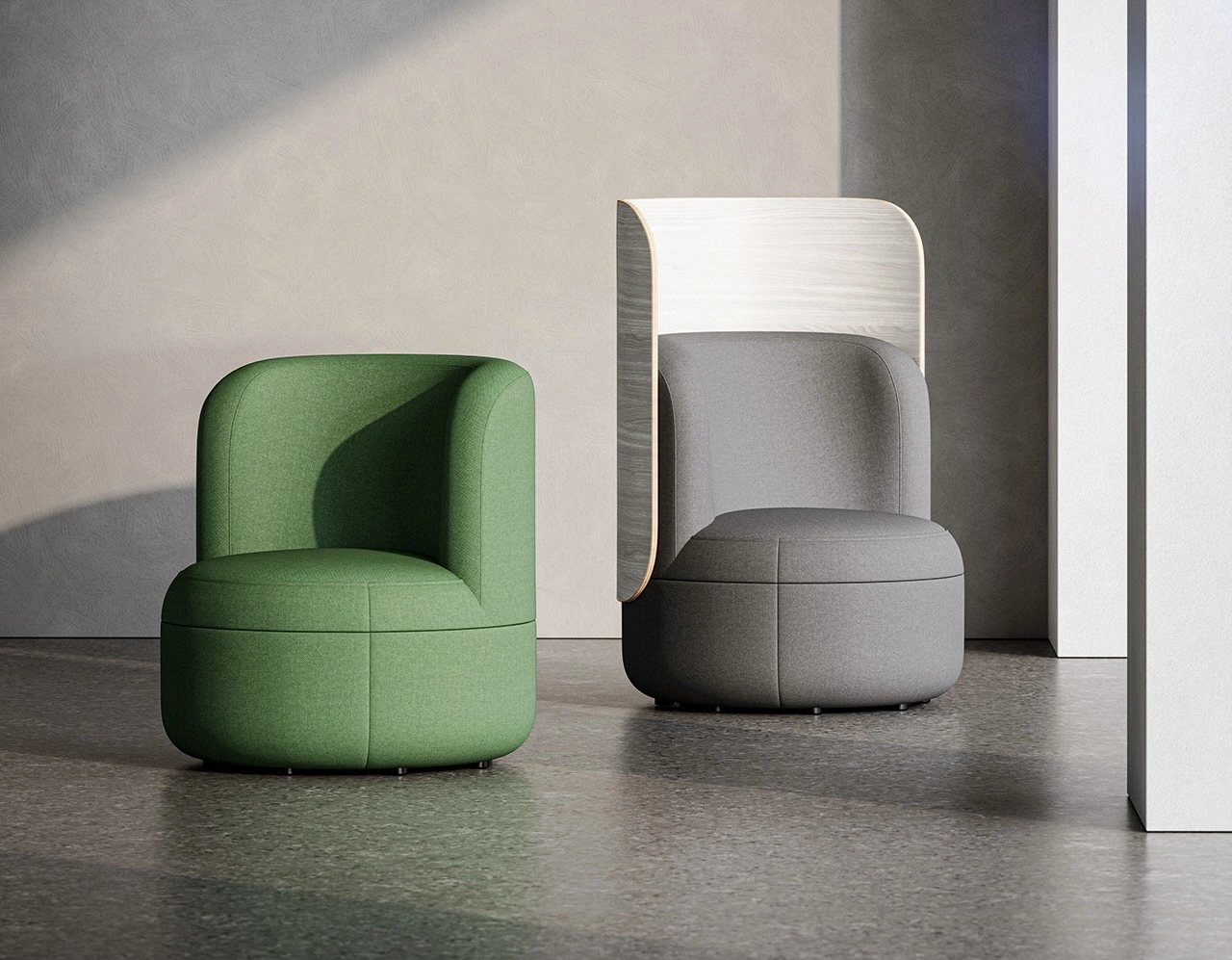In a world where technology often runs on the brute force of lithium cells and tangled chargers, Jaeger-LeCoultre invites us to imagine a timepiece that thrives on the subtlest breath of air. Presented during Milan Design Week 2025, the Atmos Infinite ‘Halo’ is not merely a clock—it is a statement, a sculpture, and an engineering marvel that bridges the ephemeral and the eternal.
Time, measured by temperature. Movement, inspired by the unseen. Welcome to the poetic logic of the Atmos.
A Clock That Breathes the Environment
At the core of the Atmos Infinite ‘Halo’ is a mechanism that feels more like science fiction than traditional horology. No batteries, no winding, no solar panels—just air and time. The clock operates on an energy source that most devices would consider useless: tiny changes in ambient temperature. A shift of just one degree Celsius is enough to power the Atmos for 48 hours.
This remarkable efficiency is achieved through a hermetically sealed capsule containing a special gas mixture. As the temperature around the clock rises and falls, the gas expands and contracts, generating enough force to wind the mainspring. It is a modern echo of an ancient idea: to work with nature rather than against it.
This equilibrium between mechanics and atmosphere turns each passing moment into a conversation between the object and its surroundings. The clock becomes alive not in a metaphorical sense, but through the literal response to environmental change. It does not count time—it senses it.
Atmosphere as Muse: The Halo’s Sculptural Presence
The ‘Halo’ is a clock you don’t just read—you contemplate.
Floating within a cylindrical crystal chamber, the Atmos Infinite appears to defy gravity. There are no bulky casings or solid frames. Instead, it embraces minimalism with an ethereal touch. The entire clock seems to hover, suspended like a halo of time. Its polished base and sleek vertical structure give way to a delicate dial and visible movement—an ode to transparency and balance.
Jaeger-LeCoultre’s design language here is one of restraint and revelation. Every element, from the brushed metal finishes to the subtly curved forms, enhances the feeling that this is not just a timekeeper, but a ritual object. It does not demand space—it elevates it.
In an era where luxury is too often confused with extravagance, the Halo reminds us that precision, quietness, and harmony are the ultimate expressions of refinement.
A Legacy of Ingenious Mechanics
The Atmos clock isn’t new—but this iteration is arguably its most elegant and poetic form yet. First conceptualized in the late 1920s and brought to life by Jaeger-LeCoultre in the 1930s, the Atmos was conceived as a clock that could run “forever” with minimal intervention. Its original models ran on changes in barometric pressure and temperature—an idea so radical, it redefined the boundaries of horological engineering.
Over the decades, the Atmos evolved from a technical experiment into a cultural icon. It has graced presidential desks, embassies, and the homes of collectors with a taste for the extraordinary. Albert Einstein himself reportedly admired its ingenuity.
The Halo edition, however, takes this legacy into the future. Not just in aesthetics, but in how it speaks to the values of our time—sustainability, quiet luxury, and meaningful innovation.
Timekeeping in an Age of Sensory Overload
In a hyper-connected age where we check the time a hundred times a day, often without realizing it, the Atmos Halo invites a different relationship to time. It is not about seconds and alarms, but rhythm and awareness.
There is no ticking sound. No backlight. No notifications. The motion is so subtle it’s almost imperceptible. You notice it not because it demands your attention, but because it exists in dialogue with its environment. The Atmos Halo reminds us that time is not a pressure—it is a presence.
Placed on a table, in a gallery, or beside a window, it behaves less like a clock and more like a living sculpture, reacting silently to the world as it changes.
A Sustainable Philosophy in Horological Form
At Milan Design Week 2025, sustainability and craftsmanship were not just themes—they were mandates. Jaeger-LeCoultre’s presentation of the Atmos Infinite Halo felt perfectly aligned with this cultural current. Here is a clock that requires no electricity, uses no disposable materials, and is designed to last for generations.
This approach is not retro—it’s radically future-facing. In an age of disposable tech and planned obsolescence, the Halo operates on a principle that is both deeply philosophical and urgently relevant: less is more. Or more precisely—almost nothing is everything.
What could be more sustainable than a machine powered by the air around it? What could be more modern than rethinking energy itself as something poetic?
Jaeger-LeCoultre: Mastery at the Edge of Time
Founded in the Vallée de Joux in 1833, Jaeger-LeCoultre has long stood at the intersection of innovation and elegance. Known as the “watchmaker’s watchmaker,” it has produced over 1,200 in-house calibers and holds countless patents.
The Atmos line is among its most iconic non-wristwatch achievements. Yet with the Halo, Jaeger-LeCoultre doesn’t rest on history—it reinterprets it. There is humility in this approach. The designers didn’t seek to reimagine time. They asked how we might listen to it more closely.
The result is a creation that transcends categories. It’s not just a clock. It’s not even just a product. The Atmos Infinite Halo is a philosophy in form.
The Timepiece as Meditation
The Atmos Infinite ‘Halo’ asks a quiet but powerful question: What if time was not measured by effort, but by grace? In an era obsessed with immediacy, it runs slowly, purposefully, intimately. It does not race. It does not warn. It simply continues, powered by the imperceptible, driven by air.
This clock does not just keep time—it honors it. And in doing so, it reminds us that the most profound technologies are often the most silent. That the future of design lies not in louder features, but in deeper relationships—with space, with nature, with the passing of hours.
As you watch the Atmos Halo turn, powered by the gentle dance of temperature, you realize: this isn’t just timekeeping. It’s time listening.
And that might be the most modern luxe of all.
No comments yet.









